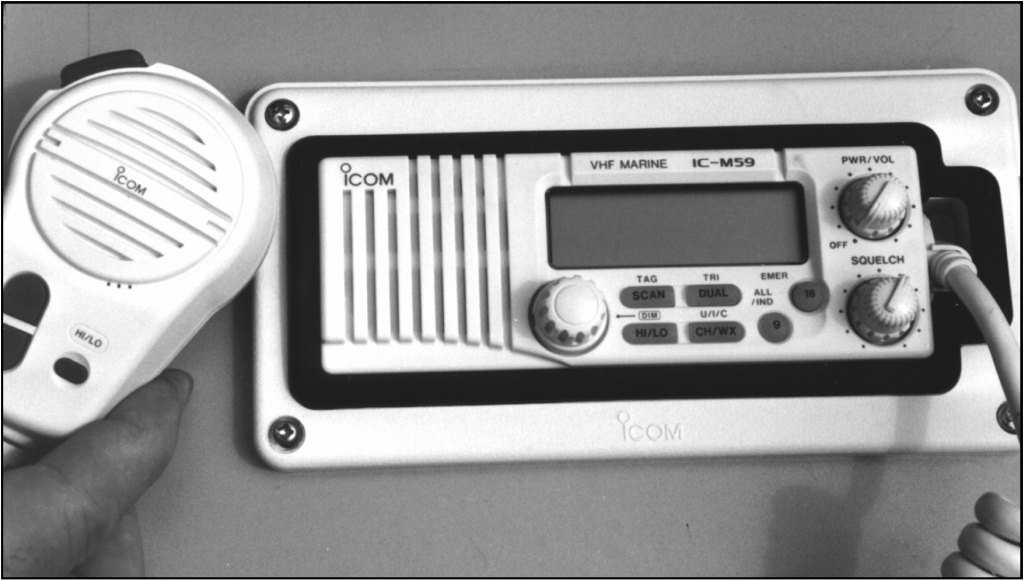Before you begin thinking about marine SSB long distance communications, let’s first review the hard working marine VHF radio system.

Radio rules require that you must have a marine VHF radio in your vessel before you can install a marine SSB transceiver.
The international marine VHF service is designed for coastal cruising. We use marine VHF when we are within 20 miles of a shore station or another VHF equipped vessel. This is the effective range of the VHF receiver.
The VHF system is worldwide. Whether you cruise to Hawaii, Bermuda, or the Mediterranean, the VHF/FM channels are the same as they are here. Just use the international (INT) button on your radio. The frequencies assigned to channels may be different in the US, Canada or the rest of the world.
Your typical ship-to-shore VHF range to the Coast Guard should be about 20 miles. You can normally hear weather broadcast stations WX-1, WX-2, and others, up to 80 miles away. The marine WX channels are available only in the US and Canada. The range to a marine telephone operator should be at least 20 miles. Ship-to-ship range is better than 10 miles.
If you are not achieving this minimum range, check out your VHF antenna system and all connections. For sailboats, the best type of antenna is one that is mounted on the mast with good quality cable down to your set. Keep a portable antenna as a spare in case of dismasting. Sailboat masthead antennas will generally pull in stations and transmit further than any other type of antenna system. These antenna are only 3’ tall and have “3dB” gain. They use the height of the mast head to achieve maximum range.
For powerboats, you should use a minimum of an 8-foot “6dB” antenna. If you have a large more stable vessel, you might want to select a 21-foot, 9dB gain antenna that performs well in all but heavy seas. A good powerboat antenna installation will normally let you reach out to the distances described above.
A good quality, high-tech, VHF transceiver is also important to obtain maximum range. ICOM produces both handheld and permanently installed marine VHF transceivers. These installed radios (with options) meet minimum digital selective calling (DSC) requirements. DSC is a new system for making distress calls. This system will be implemented worldwide over the next several years. Deep Draft (over 300 tons) vessels put into service since 1992 comply with this system now. All such vessels must comply by early 1999. Ultimately recreational vessels will need DSC VHF radios to communicate with DSC equipped ships. It is expected that all new marine VHF radios approved for sale in the US will be DSC equipped by 2001-2002. An ICOM DSC VHF set connected to your onboard GPS gives you added automatic safety communications in case of an emergency. The DSC radio will transmit an emergency call that includes your vessel’s position taken from the GPS. See the wide variety of ICOM VHF sets at your favorite marine electronics dealer.
You must have a VHF set on board and a current FCC ship station license before a single sideband radio may be installed. If you have a licensed VHF system aboard, and you need more than 20+ miles of range when out at sea, then single sideband communications is your next step.
Chapter 3: The Marine Single Sideband (SSB) Service